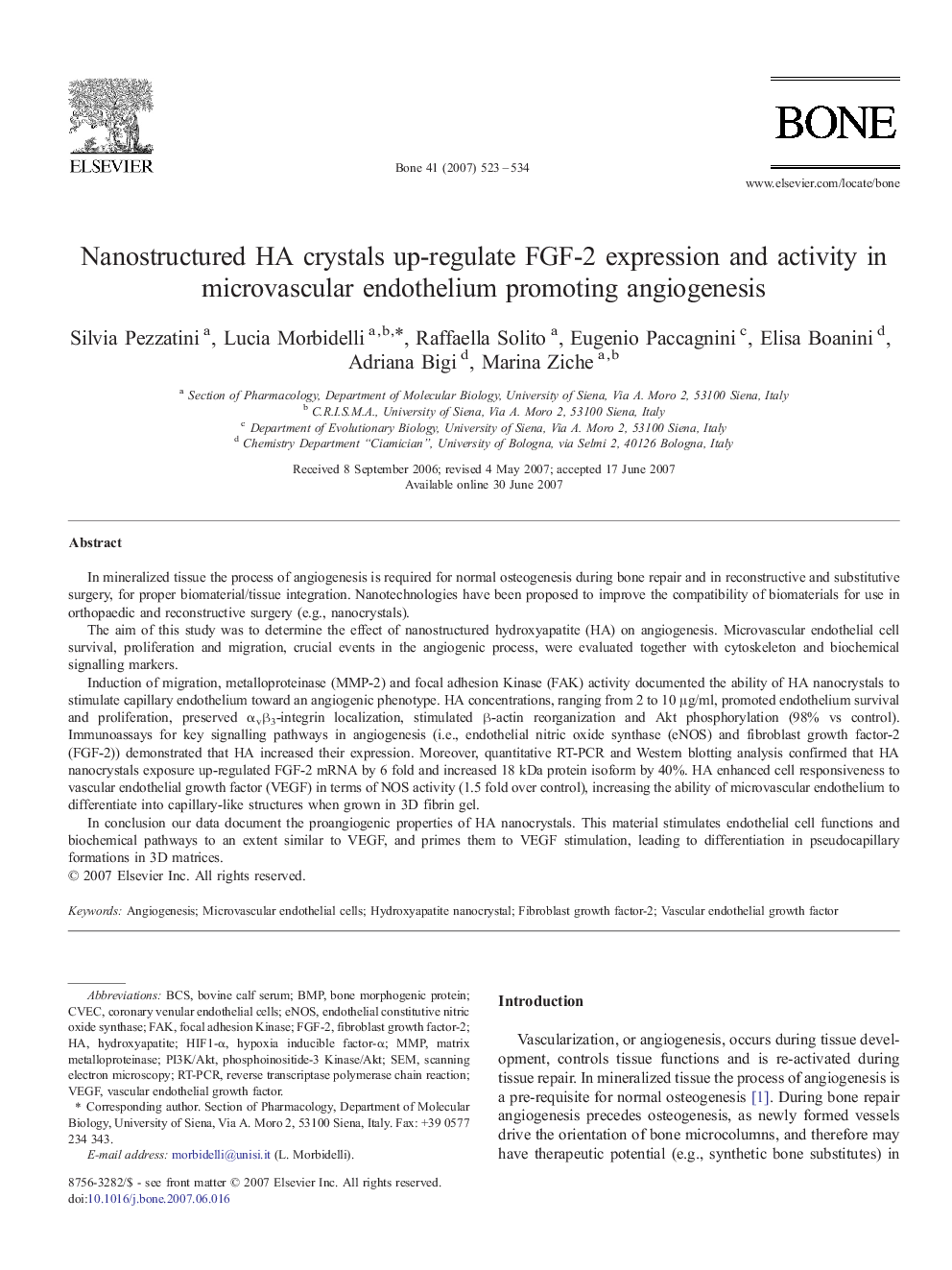| Article ID | Journal | Published Year | Pages | File Type |
|---|---|---|---|---|
| 2781896 | Bone | 2007 | 12 Pages |
In mineralized tissue the process of angiogenesis is required for normal osteogenesis during bone repair and in reconstructive and substitutive surgery, for proper biomaterial/tissue integration. Nanotechnologies have been proposed to improve the compatibility of biomaterials for use in orthopaedic and reconstructive surgery (e.g., nanocrystals).The aim of this study was to determine the effect of nanostructured hydroxyapatite (HA) on angiogenesis. Microvascular endothelial cell survival, proliferation and migration, crucial events in the angiogenic process, were evaluated together with cytoskeleton and biochemical signalling markers.Induction of migration, metalloproteinase (MMP-2) and focal adhesion Kinase (FAK) activity documented the ability of HA nanocrystals to stimulate capillary endothelium toward an angiogenic phenotype. HA concentrations, ranging from 2 to 10 μg/ml, promoted endothelium survival and proliferation, preserved αvβ3-integrin localization, stimulated β-actin reorganization and Akt phosphorylation (98% vs control). Immunoassays for key signalling pathways in angiogenesis (i.e., endothelial nitric oxide synthase (eNOS) and fibroblast growth factor-2 (FGF-2)) demonstrated that HA increased their expression. Moreover, quantitative RT-PCR and Western blotting analysis confirmed that HA nanocrystals exposure up-regulated FGF-2 mRNA by 6 fold and increased 18 kDa protein isoform by 40%. HA enhanced cell responsiveness to vascular endothelial growth factor (VEGF) in terms of NOS activity (1.5 fold over control), increasing the ability of microvascular endothelium to differentiate into capillary-like structures when grown in 3D fibrin gel.In conclusion our data document the proangiogenic properties of HA nanocrystals. This material stimulates endothelial cell functions and biochemical pathways to an extent similar to VEGF, and primes them to VEGF stimulation, leading to differentiation in pseudocapillary formations in 3D matrices.
